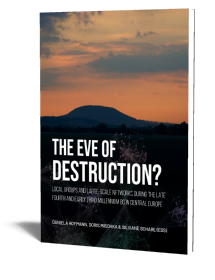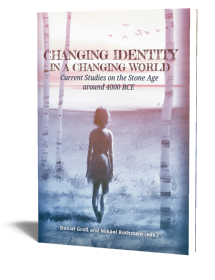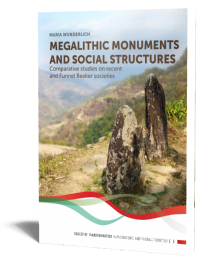The Early Neolithic of northern Europe
New approaches to migration, movement and social connection
Edited by Daniela Hofmann, Vicki Cummings, Mathias Bjørnevad-Ahlqvist & Rune Iversen | 2025
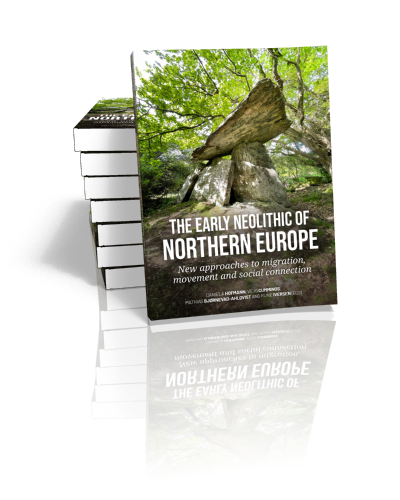
The Early Neolithic of northern Europe
New approaches to migration, movement and social connection
Edited by Daniela Hofmann, Vicki Cummings, Mathias Bjørnevad-Ahlqvist & Rune Iversen | 2025
Paperback ISBN: 9789464263268 | Hardback ISBN: 9789464263275 | Imprint: Sidestone Press | Format: 210x280mm | 262 pp. | Language: English | 17 illus. (bw) | 64 illus. (fc) | Keywords: archaeology; prehistory; Neolithic Britain and Ireland; Neolithic Scandinavia; monuments; megaliths; mobility; migration; networks | download cover | DOI: 10.59641/xx278aj | CC-license: CC BY-NC-ND 4.0
Read online or downloaded 967 times
-
Digital & Online access
This is a full Open Access publication, click below to buy in print, browse, or download for free.
-
Buy via Sidestone (EU & UK)
-
Buy via our Distributors (WORLD)
For non-EU or UK destinations you can buy our books via our international distributors. Although prices may vary this will ensure speedy delivery and reduction in shipping costs or import tax. But you can also order with us directly via the module above.
UK international distributor
USA international distributor
-
Bookinfo
Paperback ISBN: 9789464263268 | Hardback ISBN: 9789464263275 | Imprint: Sidestone Press | Format: 210x280mm | 262 pp. | Language: English | 17 illus. (bw) | 64 illus. (fc) | Keywords: archaeology; prehistory; Neolithic Britain and Ireland; Neolithic Scandinavia; monuments; megaliths; mobility; migration; networks | download cover | DOI: 10.59641/xx278aj | CC-license: CC BY-NC-ND 4.0
Read online or downloaded 967 times

We will plant a tree for each order containing a paperback or hardback book via OneTreePlanted.org.
In Britain, Ireland and Southern Scandinavia, the Early Neolithic is characterised by monumental constructions (e.g. causewayed enclosures, dolmens) and by specific traditions of depositional practice. Some aspects of these practices are similar in both regions, for example the shapes and use of monuments, their overall developmental sequences, and the traditions of deposition (kinds of objects and their treatment, locations chosen and so on). In spite of these similarities, however, there has been little explicit comparative work, largely also because of research paradigms that tended to stress local and regional peculiarities over wide-spread similarities.
Given the increasing evidence for group and personal mobility in recent years, this begs the question of whether such similarities are the result of accidental convergence on the basis of a broadly shared “Neolithic” lifeway, or rather the result of contacts, whether direct or as part of a large-scale, but loose network of interaction. The papers in this volume provide initial case studies to address this issue. Regional case studies of Britain, Ireland, southern Scandinavia, northern France and northern Germany form the basis for reflecting on the similarities and differences of sites and materials to those from adjacent areas, and on the forms and rhythms any potential contact might have taken. Authors draw on both archaeological studies of specific material categories or site patterns, as well as on aDNA evidence or modelling of 14C dates. Papers also offer theoretical reflections on the modalities of contacts and connections at this time, defining more directed questions and priorities to further develop this line of research in the future.
The Early Neolithic of northern Europe: new approaches to migration, movement and social connection
Vicki Cummings, Rune Iversen and Daniela Hofmann
Funerary practices on the fringe. The social dimensions of the Neolithic burial chamber of Stein and its European connections
Luc Amkreutz
Looking for gaps. Fourth-millennium cal BC Neolithic monuments from western France and beyond
Luc Laporte
The Stone Age boats of Atlantic Europe and the adjacent Nordic regions
Bettina Schulz Paulsson
Crossing the straits: islands, monuments, and maritime mobility in Neolithic north-west Europe
Chris Scarre
The end of the beginning of archaeogenomics. Beginnings and ends in Neolithic Britain
Tom Booth
Active artefacts and mutable identities: the role of material things in the formation of the British Neolithic
Julian Thomas
A provisional model for the Mesolithic–Neolithic transition in Britain
Alasdair Whittle
The material culture of long-distance connections: the lithic evidence from Neolithic Orkney
Hugo Anderson-Whymark
Brú na Bóinne in the Early(ish) Neolithic
Stephen Davis
Notes from the archives: re-analysis of skeletal assemblages from three later fourth millennium BC Irish passage tombs
Jessica Smyth, Jonny Geber, Neil Carlin, Muiris O’Sullivan and Seren Griffiths
Pots, stones, bones and a grain. The recipe for a more nuanced view of Neolithisation in Britain, Jutland and Switzerland
Martin Hinz
A comparison between the Neolithic monuments in the Sarup environs, the British Isles and Ireland
Niels H. Andersen
Understanding the role of flint artefacts at Neolithic causewayed enclosures in Britain and southern Scandinavia
Peter Bye-Jensen
The paradox of the Babel fish. Culture, geology and society in Neolithic Europe
Anne Teather, Lasse Vilien Sørensen
Neolithisation in Sweden, based on directly dated cereals
Karl-Göran Sjögren
Times of uncertainty at the end of the Early Neolithic in south-east Norway? Depositions of long thin-butted flint axes in the Inner Oslo Fjord area indicate social interaction and negotiation across Scandinavia in a period of change
Almut Schülke
Entangled data: a review of data biases in archaeology and their effect on European Neolithisation
Alfredo Cortell-Nicolau
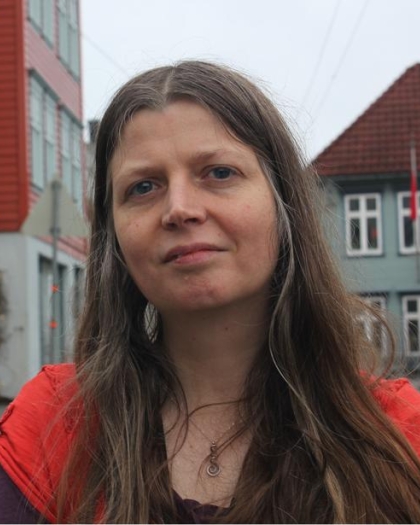
Prof. Dr. Daniela Hofmann
Daniela Hofmann is Professor of Archaeology at Bergen University, where she teaches and researches mainly on the Neolithic of Europe. Her current interests include migration, kinship, ritual, social inequality and resistance to it, as well as social contacts and change (see the forthcoming co-authored volume Negotiating migrations. The archaeology and politics of mobility, 2024, and the co-edited outreach publication Migration narratives in archaeology, 2023). In her projects, she tries to combine theoretical considerations with a variety of methods, including bioarchaeological information, in an effort to write narratives that take into account different perspectives. She hopes that knowing about diversity in the past could help us create a fairer society today, but has doubts on whether this is actually working.

Prof. Dr. Vicki Cummings
Vicki Cummings is Professor of Neolithic Archaeology at Cardiff University. Her research has focused on the start and spread of the Neolithic in Britain, Ireland and north-west Europe. She has a particular research interest in Early Neolithic monumentality, especially chambered tombs, and has excavated sites in Wales, Scotland and Ireland. More recently her work has focused on the Early Neolithic of Orkney as well as Early Neolithic kinship. She is the author of The Neolithic of Britain and Ireland and Monuments in the making: raising the great dolmens in early Neolithic northern Europe (with Colin Richards).
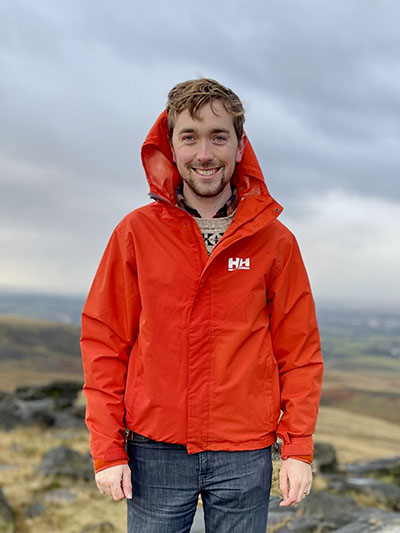
Dr. Mathias Bjørnevad-Ahlqvist
Mathias Bjørnevad-Ahlqvist is a researcher specialising in ritualised practices of the Mesolithic and Neolithic. He has particularly focused on interdisciplinary and biographical approaches to hoarding. Furthermore, he has published on heritage-related issues with Native American and First Nation objects in Danish museums, and he has worked as Research Assistant on the DFF-funded Deep Histories of Migration project, which assessed the connectivity across Northern Europe in the Early Neolithic based on the statistical analyses of ritual practices.

Dr. Rune Iversen
Rune Iversen is Associate Professor of Archaeology at the University of Copenhagen. His research focuses on the European Neolithic, including migrations, cultural interactions, art and iconography. He is currently PI of two research projects, one of them (Deep histories of migration: the early Neolithic around the North Sea) financed by the Independent Research Fund Denmark (IRFD, Grant 0132-00022B) and co-led with Daniela Hofmann and Vicki Cummings. He is also principal editor of the Danish Journal of Archaeology.
Abstract:
In Britain, Ireland and Southern Scandinavia, the Early Neolithic is characterised by monumental constructions (e.g. causewayed enclosures, dolmens) and by specific traditions of depositional practice. Some aspects of these practices are similar in both regions, for example the shapes and use of monuments, their overall developmental sequences, and the traditions of deposition (kinds of objects and their treatment, locations chosen and so on). In spite of these similarities, however, there has been little explicit comparative work, largely also because of research paradigms that tended to stress local and regional peculiarities over wide-spread similarities.
Given the increasing evidence for group and personal mobility in recent years, this begs the question of whether such similarities are the result of accidental convergence on the basis of a broadly shared “Neolithic” lifeway, or rather the result of contacts, whether direct or as part of a large-scale, but loose network of interaction. The papers in this volume provide initial case studies to address this issue. Regional case studies of Britain, Ireland, southern Scandinavia, northern France and northern Germany form the basis for reflecting on the similarities and differences of sites and materials to those from adjacent areas, and on the forms and rhythms any potential contact might have taken. Authors draw on both archaeological studies of specific material categories or site patterns, as well as on aDNA evidence or modelling of 14C dates. Papers also offer theoretical reflections on the modalities of contacts and connections at this time, defining more directed questions and priorities to further develop this line of research in the future.
Contents
The Early Neolithic of northern Europe: new approaches to migration, movement and social connection
Vicki Cummings, Rune Iversen and Daniela Hofmann
Funerary practices on the fringe. The social dimensions of the Neolithic burial chamber of Stein and its European connections
Luc Amkreutz
Looking for gaps. Fourth-millennium cal BC Neolithic monuments from western France and beyond
Luc Laporte
The Stone Age boats of Atlantic Europe and the adjacent Nordic regions
Bettina Schulz Paulsson
Crossing the straits: islands, monuments, and maritime mobility in Neolithic north-west Europe
Chris Scarre
The end of the beginning of archaeogenomics. Beginnings and ends in Neolithic Britain
Tom Booth
Active artefacts and mutable identities: the role of material things in the formation of the British Neolithic
Julian Thomas
A provisional model for the Mesolithic–Neolithic transition in Britain
Alasdair Whittle
The material culture of long-distance connections: the lithic evidence from Neolithic Orkney
Hugo Anderson-Whymark
Brú na Bóinne in the Early(ish) Neolithic
Stephen Davis
Notes from the archives: re-analysis of skeletal assemblages from three later fourth millennium BC Irish passage tombs
Jessica Smyth, Jonny Geber, Neil Carlin, Muiris O’Sullivan and Seren Griffiths
Pots, stones, bones and a grain. The recipe for a more nuanced view of Neolithisation in Britain, Jutland and Switzerland
Martin Hinz
A comparison between the Neolithic monuments in the Sarup environs, the British Isles and Ireland
Niels H. Andersen
Understanding the role of flint artefacts at Neolithic causewayed enclosures in Britain and southern Scandinavia
Peter Bye-Jensen
The paradox of the Babel fish. Culture, geology and society in Neolithic Europe
Anne Teather, Lasse Vilien Sørensen
Neolithisation in Sweden, based on directly dated cereals
Karl-Göran Sjögren
Times of uncertainty at the end of the Early Neolithic in south-east Norway? Depositions of long thin-butted flint axes in the Inner Oslo Fjord area indicate social interaction and negotiation across Scandinavia in a period of change
Almut Schülke
Entangled data: a review of data biases in archaeology and their effect on European Neolithisation
Alfredo Cortell-Nicolau

Prof. Dr. Daniela Hofmann
Daniela Hofmann is Professor of Archaeology at Bergen University, where she teaches and researches mainly on the Neolithic of Europe. Her current interests include migration, kinship, ritual, social inequality and resistance to it, as well as social contacts and change (see the forthcoming co-authored volume Negotiating migrations. The archaeology and politics of mobility, 2024, and the co-edited outreach publication Migration narratives in archaeology, 2023). In her projects, she tries to combine theoretical considerations with a variety of methods, including bioarchaeological information, in an effort to write narratives that take into account different perspectives. She hopes that knowing about diversity in the past could help us create a fairer society today, but has doubts on whether this is actually working.

Prof. Dr. Vicki Cummings
Vicki Cummings is Professor of Neolithic Archaeology at Cardiff University. Her research has focused on the start and spread of the Neolithic in Britain, Ireland and north-west Europe. She has a particular research interest in Early Neolithic monumentality, especially chambered tombs, and has excavated sites in Wales, Scotland and Ireland. More recently her work has focused on the Early Neolithic of Orkney as well as Early Neolithic kinship. She is the author of The Neolithic of Britain and Ireland and Monuments in the making: raising the great dolmens in early Neolithic northern Europe (with Colin Richards).

Dr. Mathias Bjørnevad-Ahlqvist
Mathias Bjørnevad-Ahlqvist is a researcher specialising in ritualised practices of the Mesolithic and Neolithic. He has particularly focused on interdisciplinary and biographical approaches to hoarding. Furthermore, he has published on heritage-related issues with Native American and First Nation objects in Danish museums, and he has worked as Research Assistant on the DFF-funded Deep Histories of Migration project, which assessed the connectivity across Northern Europe in the Early Neolithic based on the statistical analyses of ritual practices.

Dr. Rune Iversen
Rune Iversen is Associate Professor of Archaeology at the University of Copenhagen. His research focuses on the European Neolithic, including migrations, cultural interactions, art and iconography. He is currently PI of two research projects, one of them (Deep histories of migration: the early Neolithic around the North Sea) financed by the Independent Research Fund Denmark (IRFD, Grant 0132-00022B) and co-led with Daniela Hofmann and Vicki Cummings. He is also principal editor of the Danish Journal of Archaeology.
-
Digital & Online access
This is a full Open Access publication, click below to buy in print, browse, or download for free.
-
Buy via Sidestone (EU & UK)
-
Buy via our Distributors (WORLD)
For non-EU or UK destinations you can buy our books via our international distributors. Although prices may vary this will ensure speedy delivery and reduction in shipping costs or import tax. But you can also order with us directly via the module above.
UK international distributor
USA international distributor
- Browse all books by subject
-
Search all books

We will plant a tree for each order containing a paperback or hardback book via OneTreePlanted.org.
You might also like:
© 2025 Sidestone Press KvK nr. 28114891 Privacy policy Sidestone Newsletter Terms and Conditions (Dutch)
